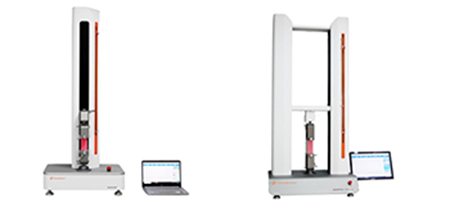Coated fabric: It is a kind of fabric treated by special technology. It can…
How to Choose Suitable Permeable Materials for Different Industries with Different Needs?
Table of Contents
What is Air Permeability?
The permeability of gas to film, coating, fabric and other polymer materials is one of the important items to test the physical properties of materials. Materials with low permeability have a certain barrier to gas, we call them barrier materials, which are mainly used in functional materials (such as commodity packaging, filtration materials, etc.). Materials with High permeability are compared with materials with a certain barrier, their gas transmittance is very large and widely used (such as medical non-woven cloth, clothing, etc.).

The Application of Permeable or Barrier Materials in Different Industries
In various industries, there are many products need to take into account the air permeability, if the permeability of materials cannot meet the requirements, there will arise a variety of problems.
1 In the medical industry, the good air permeability of non-woven fabric is one of the important reasons for its wide application. If the air permeability of the non-woven fabric is poor, the paste made from it will cause allergic symptoms in the user because it is unable to satisfy the normal breathing of the skin. The poor air permeability of medical tape, such as band stickers, can cause microbial reproduction near the wound and lead to wound infection. Therefore, it is one of the important conditions to ensure the safe use of the related products by strengthening the testing of the air permeability of the non-woven fabrics.
2 In the fresh-keeping industry, at present, there are three kinds of fresh-keeping films in the market: PVDC, PE, and PVC. For example, depending on the permeability of fresh-keeping film, we can make the best use of fruit & vegetable breathing consumption to reduce O2, inhibit fruit & vegetable self-breathing consumption, delay aging, and achieve the purpose of fresh-keeping. Otherwise, the unsatisfactory permeability of the fresh-keeping film will directly lead to the taste spoils of fruits & vegetables and shorten the shelf life.
3 In the clothing industry, different clothing has different permeability. Generally speaking, clothes worn in summer require better air permeability, which can eliminate hot and humid gases faster and make people feel cool and refreshing. On the other hand, the clothes worn in winter use fabrics with poor air permeability, which are more conducive to keeping warm.
4 With the increasing attention to the atmospheric environment and indoor air quality, the application of air filtration materials in environmental treatment is becoming more and more widespread, mainly used in dust filtering bag, hot air filtration, ventilation filtration, air conditioning filtration and so on. Because of the unique three-dimensional mesh structure of nonwovens and uniform pore distribution in the filter material, the primary, medium and efficient multistage filtration can be completed on the same filter material, and even hyperfine filtration.
5 The diaper is one of the most widely used non-woven fabrics. If the air permeability of diapers is poor after urine is absorbed, the heat and moisture are still gathered in diapers, resulting in strong irritation to the skin, at the same time, it is easy to cause bacterial breeding, red buttocks, eczema, and other problems. Therefore, good permeability is one of the basic requirements for diapers.
Influencing Factors of Materials Permeability
Fabric factor
1 Fiber morphology and yarn structure: When the linear density of the warp and weft yarn is the same as the wrap arrangement density, the special-shaped fiber fabric is superior to the circular section fiber fabric, and the air permeability of the single fiber is better than that of the single fiber.
2 Fabric structure: Under the same arrangement density and compactness, the order of air permeability is plain, twill, satin and porous structure.
3 Fabric printing and dyeing finishing: The tighter the fabric structure is, the lower the air permeability is. The fabric fiber became finer, the pores between fibers and yarns increase, and the air permeability increase.
Environmental factor
1 When the temperature is constant, the air permeability of fabric decreases with the increase of air relative humidity. After the fabric absorbs moisture, the fiber expands and the pores contract, which reduces the fabric pores and blocks, then leads to the decrease of the air permeability.
2 When the relative humidity is constant, the air permeability of the fabric increases with the increase of ambient temperature. Because the thermal movement of gas molecules will increase the diffusion ability of molecules.
3 When the temperature and relative humidity are constant, the change of air pressure on both sides of the fabric will also affect the permeability of the fabric, and it is nonlinear. The larger the air pressure difference is, the faster the air flow rate through the pores of the fabric is, the greater the air resistance is, which leads to the bending deformation of the fabric and thus affects the air permeability.
How to Test the Air Permeability of the Material?
For plastic foam, leather, textiles, cardboard, hollow ceramic and other materials with higher air permeability, the air permeability of these materials needs to be quantified when used in some specific fields. For example, the proper choice of permeability of cigarette paper can directly affect the appearance of cigarette, the taste of the cigarette and the content of the smoke composition, and the air permeability of textile is the key factor that directly affects the comfort of clothing. A professional air permeability tester is required for testing the air permeability of such materials.
The methods for testing the air permeability of these materials can be divided into two types: Pressure difference method with a constant flow rate and flow measurement method with constant pressure difference. The pressure difference method with constant flow rate is mainly used for the testing of polyurethane foam and soft or semi-rigid materials, and the flow measurement method with constant pressure difference is mainly used for textiles, non-woven fabrics, leather, geotextile and so on. The air permeability of paper, leather and other materials shall be tested for the time of passing through a certain volume of air under a certain pressure difference, and then calculated through the measured flow rate. Because the pressure difference is a necessary condition for air flow, only by maintaining a certain pressure difference on the two sides of the tested fabric, which occurs the air flow in the fabric.
The test of air permeability is based on the fixed pressure difference. The pressure difference stipulated by national test standards is not consistent, for example, the ASTM D737 in the United States and JIS L1096 in Japan are defined as 127.4Pa (13mm water column), the France NF G07 is defined as 196Pa (20mm water column), the UK BS 5636 is defined as 98Pa (About 10mm water column), the Germany DIN 53387 specifies that clothing fabric is defined as 100Pa (10mm water column), parachute fabric as 160Pa (16mm water column), filter fabric and industrial fabric as 200Pa (20mm water column), the China GB/T 5453 specifies that clothing fabric is defined as 100Pa (10mm water column), industrial fabric is 200Pa (20mm water column).
Air permeability is an important part of fabric permeability. The air permeability of the fabric is essentially related to the gap between the fibers in the fabric. For different uses of fabrics, it is required to have different air permeability. For example, the automobile airbag requires it to have good gas wrapped performance, while the summer clothing fabric has a good air permeability to ensure the comfort of the human body. There are many test standards for the air permeability of fabrics. There are slight differences between the standards according to the size of the test area and the pressure value. The experimenters should carry out the tests in strict accordance with the regulations. The test conditions between the standards are shown in the following table:

Attached: Common Unit Conversion of Air Permeability
1 cm³/cm²/s = 1.9685 ft3/ft2/min = 1.9685 ft/min
1 cm3/cm2/s = 10 mm/s
1 L/m2/s = 1 mm/s
1 L/dm2/min = 1.667 mm/s
1 m3/m2/min = 16.667 mm/s
1 m3/m2/h = 1000.02 mm/s
1 mm/s = 0.19685 cfm
TF164E fabric auto air permeability tester is used to test the air permeability of a variety of flat materials: knitted fabric, woven fabric (including tightly coated fabric), non-woven fabric, paper, paper felt, glass fiber, air filter, and foam. The test is fast and accurate.
Instrument Characteristics
1 Touch screen control, simple operation, greatly shorten the test time.
2 The pressure system can automatically detect the air pressure range, and the air permeability of various samples can be tested accurately with small error.
3 With air flow primary adjustment and fine adjustment function, fully closed pipe design, reduce the steam leakage to a minimum.
4 The test parameters are set directly, and the parameter units can be set according to the needs.
5 Equipped with a high precision sensor, air flow feedback regulation, built-in memory card. The test results are processed automatically and displayed directly without manual calculation.
What are the influencing factors on the air permeability of materials? How to test the air permeability of the material? How to choose the right air permeability material? Through this article, I think you might have got some information. If you want to know more about fabric permeability testing, please contact us. As a professional supplier of textile instruments, we are committed to continually improve the user experience, TESTEX Textile Testing Equipment is a reliable choice for testing textile quality.
This Post Has One Comment
Leave a Reply
You must be logged in to post a comment.





Yes! Ϝinally something about astrology.